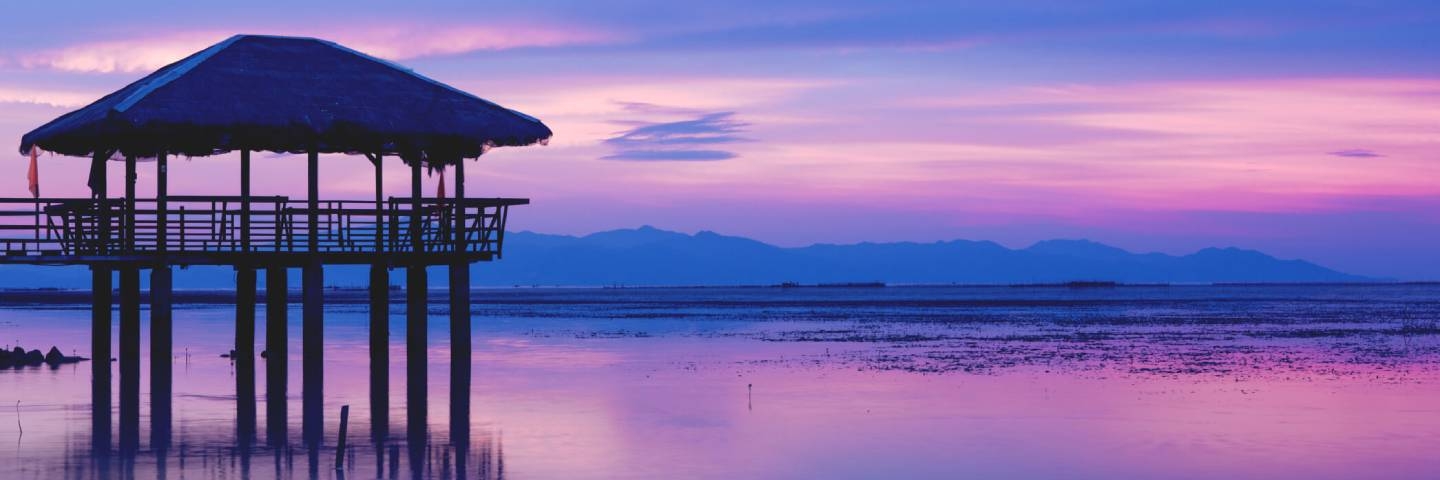
Doing Visita Iglesia for Holy Week? Here are 7 of the most beautiful churches in the Philippines
You can say there are two kinds of Filipinos that spend their Holy Week break: one that heads straight to the beach for family fun under the sun, and the other heads to churches for the traditional Visita Iglesia.
We have stories on under-the-radar beaches, cliff diving spots, budget adventures and the like. Now we’re setting our sights on some of the most beautiful churches in the Philippines.
Visita Iglesia is the tradition of visiting seven churches on Maundy Thursday and Good Friday. It is a popular panata or sacred vow that the Catholic faithful do during Holy Week. While no one expects you to visit all these churches in different parts of the country in two days, keep this list for future travels.
Manila Cathedral, Intramuros, Manila

When we say that Manila Cathedral is the Mother of all Churches, Cathedrals and Basilicas in the Philippines—we mean it literally. The Manila Cathedral-Basilica became a cathedral in 1581 when the Philippines was separated from the Archdiocese of Mexico and became a new diocese with its episcopal seat in Manila. Pope John Paul II raised the Manila Cathedral to the “dignity of a Basilica (motu proprio) in 1981,” two months after his first visit to the Philippines in February 1981. The cathedral we know today is its 8th incarnation and built in the Neo-Romanesque style with famous saints sculpted in travertine stone.
Barasoain Church, Malolos, Bulacan

Our Lady of Mount Carmel Parish or Barasoain Church holds a special place in Philippine history. It was the site of the first Philippine Republic after the Malolos Constitution was ratified in 1899 and Emilio Aguinaldo took his oath as president of the republic here. Construction of the church was completed in 1888 in a Baroque Revival interpretation popular during the Spanish period. Barasoain Church features the typical church-convent-patio design built during the period. The design also features elements from Early Renaissance, Romanesque, and Neo-Classic architecture.
Mt. Carmel Chapel, Basco, Batanes

Mt. Carmel aka Tukon Church is not an old church. It was built in 2008 at Sitio Tukon in Batanes based on the traditional design of an Ivatan house made of stone walls. A typhoon in 2016 damaged the church with the ceiling inside collapsing and destroying the statue of its patron saint, San Jose de Obrero or St. Joseph the Worker. In 2008, the National Historical Commission of the Philippines designated the church as a National Historical Landmark.
San Agustin Church, Intramuros, Manila

Just a few steps from the Manila Cathedral is San Agustin Church or Immaculate Conception Parish. This is the third San Agustin Church, the first two being made of bamboo during the earlier Spanish period and both gutted by fire. The present church, built in 1587, was designed following the style of some churches built by the Augustinians in Mexico.
Molo Church, Molo, Iloilo

Also known as Saint Anne Parish Church, Molo Church has the most wonderful nickname of “the feminist church” because it has only images of female saints inside (16 of them). They include Saint Anne, Saint Marcella, Saint Apollonia, Saint Fenevieve, Saint Monica, Saint Claire, Saint Cecilia, Saint Margaret and Saint Martha—and of course the Blessed Virgin Mary. The church was designed in Gothic-Renaissance style with two towers and pointed arches.
Paoay Church, Paoay, Ilocos Norte

Saint Augustine Church or Paoay Church was completed in 1710. An interpretation of the European Baroque, it has 24 enormous buttresses on the sides and the back of the church building. Its walls are made of coral stones on the lower part and bricks on the upper part. The adjacent bell tower was built separately and resembles a pagoda. The church served as an observational post in two wars: for Filipino revolutionaries in 1898 and guerillas against Japanese soldiers in World War II.
Basilica Menor del Santo Niño, Cebu

The oldest Catholic church in the country, the Basilica Menor del Santo Niño was established in 1565 and legend has it that it was built on the spot where the image of the Santo Niño was found during Miguel Lopez de Legazpi’s expedition. The image was presented by Ferdinand Magellan to Rajah Humabon on the occasion of the royal baptism to Catholicism in 1521. The church compound has a pilgrim center (for the growing devotees) and a museum.
Wherever summer takes you, make sure you’re protected so you can travel with your mind at ease, with less worries and more time to enjoy a magnificent summer. Check our FWD Life Insurance online shop for quick to purchase plans like The One for Life, which offers life, critical illness, and accidental life cover. Check it out, personalize, and create your plan according to your lifestyle and needs. The only thing you should worry about this summer is what to pack!
Interested in The One for Life?




